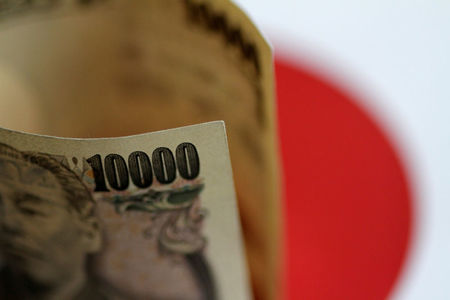What is the yen carry trade and why does it matter?
2024.08.11 04:31

The so-called “yen carry trade” has recently made headlines, with many pointing fingers at this investment strategy for the recent turbulence in global markets.
The yen carry trade involves borrowing at near-zero interest rates in Japan and investing the proceeds into higher-yielding markets such as US dollars, emerging markets, or global tech stocks.
When investors rapidly unwind these trades, they can ripple through various markets globally. In fact, this was one of the key factors that led to a recent rout in global equities.
According to UBS strategists, a series of developments has made the yen carry trade seem more precarious.
The Bank of Japan’s unexpected interest rate hike on July 31 raised concerns about further increases. Concurrently, fears of a US recession and expectations of rate cuts from the Federal Reserve have narrowed the rate advantage that carry trades depend on. Also, those who invested in US tech stocks faced diminishing confidence in AI’s outlook.
A carry trade takes advantage of low interest rates in one country to invest in higher-return assets abroad. The strategy relies on the difference, or “carry,” between the low-cost borrowing rate and the higher-yielding investments.
However, UBS explains that this approach can backfire if the funding currency appreciates sharply, if the interest rate gap narrows, or if the returns on the invested assets falter.
“The strategy gained prominence around 1999, when the Bank of Japan pushed rates down to zero in response to persistent deflation,” strategists noted.
The yen is favored for carry trades because of Japan’s prolonged low interest rates, even experimenting with negative rates until March 2024. In contrast, the Swiss franc, another potential funding currency, has seen more significant rate increases, reducing its appeal. Japan’s tolerance for a depreciating yen further enhances the yen’s attractiveness for carry trades.
Assessing the size of the yen carry trade is crucial to understanding the potential market risks. Contrary to some media claims of trillions of dollars at risk, UBS strategists argue that such figures are exaggerated.
“We believe the trades at risk of a swift unwinding are far smaller,” strategists said.
They categorize the yen carry trade into three types:
1) ‘Fast money:’ Often leveraged and based on futures contracts, these positions have mostly been liquidated as the yen appreciated. Data from the Commodity Futures Trading Commission (CFTC) supports this.
“This CFTC series suggests that most trades of this type have already been liquidated as the yen has appreciated against the dollar since its low point in early July. The rapid rise in the Japanese currency since late July appears to have put a halt to this process.”
2) ‘Semi-fast money:’ According to UBS, this involves borrowing yen to invest in higher-yielding currencies or stocks. Data from the Bank of International Settlements suggests an increase of around $94 billion in yen loans since mid-2022, which is around the same period when the rate gap between the Fed and the Bank of Japan was widening.
3) ‘Sticky money:’ Long-term investments by Japan’s pension funds and insurers, such as the Government Pension Investment Fund. Strategists believe these holdings “are not at significant risk of being sold and repatriated.”
Most “fast money” trades have already been unwound, and “sticky money” investments are stable. The main risk lies in the $94 billion of “semi-fast money” trades, UBS points out.








